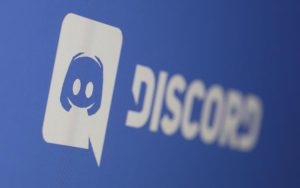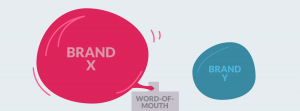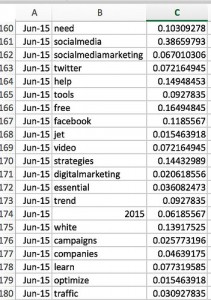From underestimating the impact of economic malaise on the job market to expecting year over year marketing efforts to stay the same, here are the nine answers to the questions, “What was your biggest failure in 2022? What did you do about it? And what will you do differently in 2023 as a result?”
Underestimating the effects of the economy on the job market
My biggest failure in 2022 was underestimating how quickly economic malaise would impact the job market; we could have taken advantage much sooner.
Hiring was going on strong even in the face of rising inflation, and then trends suddenly shifted to match new and less advantageous circumstances for both HR departments and candidates alike.
Luckily, this actually benefited us, as more companies realized how preemployment testing can help them make the most of every hire. Still, we can’t and won’t take anything for granted in 2023. Our focus will be on doing our best to sell our product as the perfect solution to modern HR problems.
Linda Scorzo, CEO, Hiring Indicators
Hiring the wrong person
I think the biggest failures I’ve had in 2022 have been around hiring the wrong person. Sometimes in the rush to get someone in a position, you don’t do as much diligence as you should. In this case, I should’ve taken more time to bring on the person and maybe seen that they wouldn’t stay with the team.
I could have avoided a less-than-ideal situation. I’ve been able since then to build a stronger team but what I’ve learned is to take more time to bring on a new person and also to make sure that we document any training and information for team members so that if something happens, there is information in place.
I think it’s also great to have members of the team that have the skill set to wear multiple hats just in case they can fill in temporarily. Life happens for us as leaders and life happens for team members, so doing succession planning and having some fail safes in place can help with the frustrations or failures when they happen.
Gresham Harkless Jr., founder and CEO Blog Nation
Not taking enough risks
My biggest failure in 2022 is not taking a risk. I’ve had a couple of new revenue-generating business ideas on the bench since January that deserve and need to see the light of day.
Instead of focusing on failing fast (i.e., learning if and how to make these new ideas profitable), I’ve been maintaining the status quo for fear of losing out. I know it’s the wrong approach, but it’s incredibly hard to set aside proven business models for an unproven one as a leader of a lean startup.
I’m learning on the go, however, and have set aside both time and personnel to get these ideas live by the new year and intend to head into 2023 with a plan for growth!
Amy Zwagerman, founder and CMO, The Launch Box
Mismanaging a return to office
In the early part of the year, we finally implemented our plan to return to the office full-time, and it was a disaster. Not from a logistical standpoint, but from an employee relations standpoint.
I wildly underestimated how much people value their remote work, and had placed so much emphasis on the drop in productivity that I went ahead with the plan, blind to employee resistance. I never once polled employees or sought feedback, and when the time came for the move, the pushback blindsided me.
Multiple people ended up leaving for other jobs, and I immediately had to back pedal. Within weeks, it forced me to shift to a hybrid environment as a matter of compromise.
This new setup has ultimately been successful for us, and productivity metrics are back up, but I learned my lesson the hard way. People place a massive value on the flexibility of remote work.
John Ross, CEO, Test Prep Insight

Ignoring Structured Work Time and Strategic Sprints
This year saw substantial growth for my venture and, in many cases, that should be enough. We had an outsourcing model down; we earned our first slice of revenue—both noteworthy aspects in their own right. But both my business partner and I felt we were sitting on a goldmine—a goldmine that we had both under-invested in prospecting.
Both holding full-time jobs as we bootstrap this venture, we naively thought in 2022 that a combination of outsourcing and asynchronous communication would be sufficient. Finally, in the last quarter of this year, we cracked the code for 2023—dedicated weeklong strategy sprints. Using up our PTO smartly, we created specific sprints for the business to achieve desired outcomes and our growth already shows signs of substantially improving.
The Sprint framework achieved two outcomes, one expected in that we got a lot more done with a structured work schedule. But the unexpected is the bigger benefit as we gained more alignment and focus as a business partnership.
Patrick Ward, founder, NanoGlobals
Not prioritizing the search for new clients
I came off the heels of having surgery and had an abundance of prospects at the time. I determined with the pitches and onboarding, I will stop any new initiatives to find new business.
Long story short, none of them came on after significant conversations and pitches. I’ve learned first, never stop looking for new clients, no matter how busy you are, and carve the time out on your calendar for sales and marketing.
Hire a virtual assistant if you don’t have one and don’t stop your outreach process, whether it be an email, LinkedIn, or conference outreach. Second, be cognizant of how much time you spend on your pitches knowing these are not clients and your job is not to solve their problems today.
Your job is to show succinctly you understand their major obstacles, their goals, and the directions you would go. This means with a few tenable approaches pending the situation, you can personalize their solution with 75% already in place.
Daniel Kamen, managing director and founder, Serial Scaling
Battling impostor syndrome
The definition of “success” may vary from one entrepreneur to another. In this context, success is achieving a goal, or a set of goals. The biggest challenge, or failure, I confronted in 2022 was cleaning up the residue of my battle with Impostor Syndrome.
If you’re unfamiliar, imposter syndrome is a psychological phenomenon where a person struggles to believe that they deserve their success. A person may believe luck led to success rather than skill or qualification.
As more than 80% of people experience impostor syndrome, I identified the steps I needed to take to overcome my fear of success.
I identified the belief blockers interfering with my taking consistent action. Then, I committed to showing up consistently each week and inviting prospects to work with me. Finally, I was transparent with my community and invited them along on the journey, as many of them can relate. In 2023, I’ll apply more pressure.
A. Margot Blair, CEO, AMB Consulting & Co.
Scaling too quickly for our onboarding process
I hired a team of four people: a project manager, a content manager, a digital marketer, and a designer. I also brought in two external vendors: an SEO firm and a copywriting firm.
The goal for this combined team was to accelerate the growth of our brand and increase inbound lead generation. The mistake was to hire them all at the same time. I heavily underestimated the level of effort required to onboard each team/individual.
Within three to four months, I stopped all our SEO efforts. I reorganized my time to allocate more to the new team for training, scheduled product demos, created company standards, and implemented new processes for everyone to follow. I do plan to hire an internal SEO specialist soon (after all other roles are operating without issues).
The biggest lesson I learned is to pace myself on this journey. When launching a new product or service, it’s okay to build a team gradually. After your first couple of people are trained, they can help to onboard additional employees.
Igor Krasnykh, CEO, PowerSync
Expecting 2021 marketing to work in 2022
Through 2021, founders and CEOs saw their marketing efforts settle—the results from endless panicky pandemic-era marketing research and development through ’19-’20 finding new channels through pivoting strategies and a lot of effort.
Going through 2022, we forecasted those 2021 results to pay further dividends and a lot of fellow founders started the year relishing the fact they could continue to relax strategically.
This year, however, did not provide the expected stability, with markets continuing to significantly fluctuate from political upheaval, war, resistance, and the return to office movements. These all provided a mix of expectations in the economic environment, leading to a fluid and unpredictable marketing arena.
Moving into 2023, founders and CEOs will need to take learning from the ghost-predictability expectation of the ’21-’22 era, and will instead need to prepare for volatility, and more R&D, by leaning closer to their client’s voices and needs.
Sam Johnston, CMO and cofounder, nth Venture
What will you do differently as a result of failure?
People say there’s more to learn from failure than from success. If that’s true, we’re lucky that these business leaders had the courage to share their biggest failures from the last year, and what they’re doing differently as a result.
Hopefully you can look at these failures to make some calculated adjustments and avoid potential pitfalls for the year ahead.
Brett Farmiloe is the founder of Terkel.
(13)








